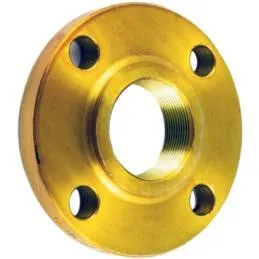-
Cangzhou Yulong Steel Co., Ltd.
-
Phone:
+86 13303177267 -
Email:
admin@ylsteelfittings.com
- English
- Arabic
- Italian
- Spanish
- Portuguese
- German
- kazakh
- Persian
- Greek
- French
- Russian
- Polish
- Thai
- Indonesian
- Vietnamese
- Zulu
- Korean
- Uzbek
- Hindi
- Serbian
- Malay
- Ukrainian
- Gujarati
- Haitian Creole
- hausa
- hawaiian
- Hebrew
- Miao
- Hungarian
- Icelandic
- igbo
- irish
- Japanese
- Javanese
- Kannada
- Khmer
- Rwandese
- Afrikaans
- Albanian
- Amharic
- Armenian
- Azerbaijani
- Basque
- Belarusian
- Bengali
- Bosnian
- Bulgarian
- Catalan
- Cebuano
- China
- China (Taiwan)
- Corsican
- Croatian
- Czech
- Danish
- Esperanto
- Estonian
- Finnish
- Frisian
- Galician
- Georgian
- Kurdish
- Kyrgyz
- Lao
- Latin
- Latvian
- Lithuanian
- Luxembourgish
- Macedonian
- Malgashi
- Malayalam
- Maltese
- Maori
- Marathi
- Mongolian
- Myanmar
- Nepali
- Norwegian
- Norwegian
- Occitan
- Pashto
- Dutch
- Punjabi
- Romanian
- Samoan
- Scottish Gaelic
- Sesotho
- Shona
- Sindhi
- Sinhala
- Slovak
- Slovenian
- Somali
- Sundanese
- Swahili
- Swedish
- Tagalog
- Tajik
- Tamil
- Tatar
- Telugu
- Turkish
- Turkmen
- Urdu
- Uighur
- Welsh
- Bantu
- Yiddish
- Yoruba

Sep . 25, 2024 02:11 Back to list
Steel Flange Plate Specifications and Applications in Structural Engineering
Understanding Steel Flange Plates Applications and Benefits
Steel flange plates are essential components in various engineering and construction applications. They are widely used in structural engineering, manufacturing, and mechanical applications due to their strength, durability, and versatility. A flange plate is essentially a flat piece of metal with an extended edge or lip, which is used to connect two separate parts or sections of a structure.
One of the primary applications of steel flange plates is in piping systems. These plates serve as a critical connection point between pipes, allowing for the transfer of fluids and gases. By providing a strong and reliable connection, flange plates ensure the integrity and safety of the entire piping system. In high-pressure applications, the importance of a well-fitted flange plate becomes even more pronounced, as it can prevent potentially hazardous leaks and failures.
In addition to piping, steel flange plates are integral to the creation of beams and girders in construction. They can be used to reinforce structural steel elements, enhancing their load-bearing capacity and overall stability. When engineered correctly, flange plates distribute loads evenly across a structure, preventing points of weakness that could lead to catastrophic failures.
steel flange plate

Another essential usage of steel flange plates is in machinery and industrial equipment. Many mechanical tools and machines require precise alignment and stability to function correctly. Flange plates provide the necessary support to keep these parts aligned while allowing for easy assembly and disassembly. This feature is particularly valuable in maintenance and repair scenarios, where quick access to specific components is crucial.
When selecting steel flange plates, several factors must be considered, including the type of steel, thickness, and dimensions. Common materials include carbon steel, stainless steel, and alloy steel, each offering unique properties suited for different applications. For instance, stainless steel flanges are ideal for environments prone to corrosion, while carbon steel is often preferred for structural applications due to its strength and affordability.
The manufacturing process of steel flange plates typically involves cutting, shaping, and welding. Advanced techniques, such as CNC machining and laser cutting, ensure high precision and quality, allowing for custom designs tailored to specific project requirements. Moreover, the finish of the flange plate—whether painted, galvanized, or left bare—can significantly affect its resistance to environmental factors.
In conclusion, steel flange plates are invaluable components in various sectors, including construction, manufacturing, and mechanical engineering. Their ability to provide robust connections and enhance structural stability makes them indispensable in the modern industrial landscape. By understanding the types of steel available, manufacturing processes, and appropriate applications, engineers and builders can make informed decisions that enhance the durability and safety of their projects. As industries continue to evolve, the demand for reliable and high-performing flange plates will undoubtedly grow, solidifying their role in the future of construction and engineering.
Latest news
-
ANSI 150P SS304 SO FLANGE
NewsFeb.14,2025
-
ASTM A333GR6 STEEL PIPE
NewsJan.20,2025
-
ANSI B16.5 WELDING NECK FLANGE
NewsJan.15,2026
-
ANSI B16.5 SLIP-ON FLANGE
NewsApr.19,2024
-
SABS 1123 FLANGE
NewsJan.15,2025
-
DIN86044 PLATE FLANGE
NewsApr.19,2024
-
DIN2527 BLIND FLANGE
NewsApr.12,2024
-
JIS B2311 Butt-Welding Fittings LR/SR 45°/90° /180°Seamless/Weld
NewsApr.23,2024











